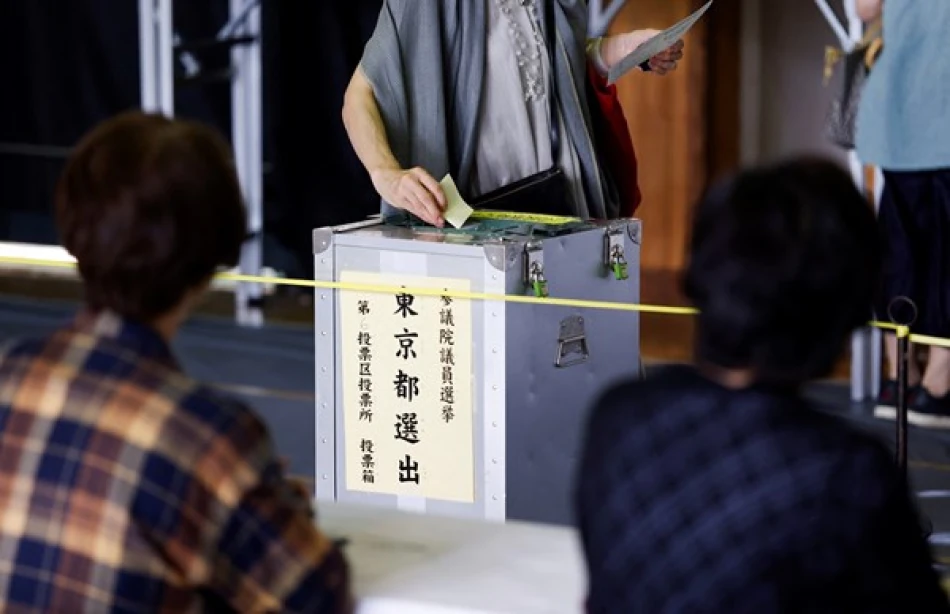
Japan Faces Pivotal Senate Elections, Shaping National Leadership
Japan's Ruling Coalition Faces Historic Defeat as Ishiba's Leadership Hangs in Balance
Japanese voters are delivering what appears to be a crushing blow to Prime Minister Shigeru Ishiba's ruling coalition in Sunday's Upper House elections, with early projections suggesting the government will fall far short of its already modest targets. The vote represents a potential turning point for Japan's political landscape, as Ishiba faces mounting pressure to resign or fundamentally restructure his coalition after losing the Lower House majority just months ago.
A Dramatic Lowering of Expectations
Ishiba's team entered Sunday's contest with remarkably diminished ambitions. The Prime Minister set a bare-minimum target of securing just 125 seats—a simple majority in the 248-seat Upper House. To achieve even this modest goal, his Liberal Democratic Party (LDP) and junior coalition partner Komeito would need to win 50 of the 124 seats up for grabs, building on their current 75-seat base.
This represents a stunning retreat from the coalition's pre-election strength of 141 seats, effectively acknowledging that significant losses were inevitable. Media polling suggests even these lowered expectations may prove overly optimistic.
The October Warning Shot
Sunday's vote comes as the second major electoral test for Ishiba's government, following October's Lower House elections where the coalition lost its majority for the first time in over a decade. That defeat should have served as a wake-up call, but the ruling parties appear to have failed to regain public confidence in the intervening months.
The back-to-back electoral setbacks reflect deeper structural problems within the LDP, including persistent corruption scandals, economic stagnation concerns, and voter fatigue after decades of conservative rule with brief interruptions.
Political Earthquake or Manageable Crisis?
Unlike many parliamentary systems where such losses would trigger immediate government collapse, Japan's political structure offers more stability. However, Ishiba now faces a perfect storm of challenges that could prove insurmountable.
Internal Party Pressure
LDP lawmakers are already positioning for a potential leadership challenge, with party veterans likely to argue that Ishiba's brief tenure has proven he cannot connect with voters. The party has a history of quickly replacing unpopular leaders, and Ishiba's support within the LDP was never particularly strong when he assumed office.
Coalition Mathematics
More immediately pressing is the arithmetic of governance. Without reliable majorities in both houses, Ishiba will need to either find new coalition partners or govern through ad-hoc agreements with opposition parties. This could paralyze policymaking on critical issues from defense spending to economic reform.
What This Means for Japan's Future
The electoral results signal potential instability in the world's third-largest economy at a particularly challenging moment. Japan faces mounting security threats from North Korea and China, an aging society requiring massive social reforms, and economic pressures that demand decisive action.
International partners, particularly the United States, will be watching closely. Japan's role in containing China's regional ambitions and maintaining the rules-based international order depends partly on having a stable government capable of making and implementing tough decisions.
For investors, the prospect of political paralysis raises questions about Japan's commitment to structural reforms and its ability to maintain the policy consistency that has supported recent economic improvements.
The Road Ahead
Ishiba's options are narrowing rapidly. He could attempt to broaden his coalition by courting centrist opposition parties, though this would likely require significant policy compromises. Alternatively, he might try to weather the storm and hope economic improvements restore public confidence before the next major electoral test.
However, the most likely scenario may be another LDP leadership change, continuing Japan's pattern of frequent prime ministerial turnover that has characterized much of the past two decades. Whether such a change would restore public faith in the conservative coalition remains an open question, as the problems facing the LDP appear to run deeper than any single leader.
 Layla Al Mansoori
Layla Al Mansoori







